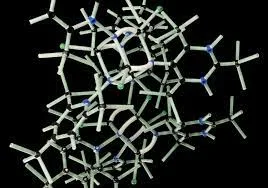Research team: Wildlife can now be detected by inhaling DNA in the air
Studying ecosystems for signs of change in the past required a lot of work and exploration on Earth, whether it was plant or animal species, and scientists are studying an innovative method close to the investigations approach in detective films (which tracks DNA in order to trap criminals) to record shapes Wildlife that is hard to see.
This approach is called metagenomics, and it already exists, but it is currently being applied mainly to water bodies and soil rather than using it in dry environments and outdoors, so several research groups are seeking to expand this approach by collecting DNA from the air.
DNA from the air
As a report by the British newspaper "The Economist" indicated, two of these research groups - the first led by Christina Lingard from the University of Copenhagen in Denmark, and the other led by Elizabeth Clare from York University. in Toronto, Canada - using zoos to test ways to extract DNA from the air; They are ideal places to conduct this type of experiment, as they contain already known animals, while other groups conduct similar tests in the wild.
The two groups have just published preliminary results of their experiments in the specialized scientific journal Current Biology. Dr. Clare's team adapted the method for collecting samples by pumping air through filters normally used to extract DNA from water.
As for Lingard's team, he followed 3 methods: the first is based on filtering the air for analysis through some water to try to dissolve any DNA it carries, thus allowing it to be analyzed by traditional metagenomic methods.
The second and third methods use fans either as large as the type used to cool large computers in data centers or as small as those used to cool office machines, which blow air through filters such as those used in air conditioning systems to remove polluting particles.
Tangible results
Both groups recorded tangible results; Dr. Lingard's three routes revealed 30 species of mammals nearby, some like white rhinos, golden lions and eastern gray kangaroos on display in the park, but not many like red squirrels, hares, brown mice and house cats.
Dr. Clare's findings were equally encouraging. Her group, which conducted its tests in the British town of Hammerton Zoo, not only monitored 17 animals close to the zoo, but also recorded 8 other types of mammals and birds, including hedgehogs, a type that has witnessed a sharp decline in the United Kingdom in recent years and represents exactly the type of creatures that matter Researchers and those who conduct environmental censuses.
These results seem to show - according to the newspaper - that the applications of genomics in the atmosphere are working, but the vertebrates that have been monitored are by no means, despite their size, the only important species in any ecosystem, as insects may be much more valuable than them.
Better and cheaper
Fabian Roger, an entomologist now working in Zurich, Switzerland, has shown that the same technique also works with insects, and can therefore produce new data completely different from any environment. Although Dr. Roger has yet to publish his findings in any scientific journal, he spoke about them last December during an online conference called Ecology Across Borders.
His version of the filtration system was able to detect a total of 85 insect species in two different locations, 77 of which had not been monitored using the most traditional methods, in addition to 9 vertebrates (different frogs, birds and mammals) and many invertebrates.
On the other hand, he could not detect 81 types of insects that other methods showed their presence, which is considered a failure, especially with regard to the moth family, where he identified only 9 types of them, while the traps caught 48 huge species, although he managed to identify 5 Species that were not present inside the traps.
The Economist asserts that DNA sniffing technology may one day contribute to issuing warnings when a local species is at risk, although the methods currently used are not sensitive enough to do so, as Dr. Roger's results show that it actually works better as an "addition" to established methods. It is not a substitute for it.
But the only thing that has been proven true so far about this technology - concludes the newspaper - is that it will become better and cheaper over time, and the hypothesis that it will one day turn into a sniffing nose used by researchers and naturalists to monitor the hidden recesses of the unseen environment will remain pending, at least until recently.

